Boardsports are sports that are played with some sort of board as the primary equipment. These sports take place on a variety of terrain, from paved flat-ground and snow-covered hills to water and air. Most boardsports are considered action sports or extreme sports, and thus often appeal to youth. A large proportion of youth partaking in these sports, together with aesthetic damage to property from sports like skateboarding, has led to many board sports being marginalized by the greater world of sports in the past. However, many board sports are gaining mainstream recognition, and with this recognition have enjoyed wider broadcast, sponsorship and inclusion in institutional sporting events, including the Olympic Games.

Kiteboarding or kitesurfing is an extreme sport where the kiter uses the wind power with a large power kite to be pulled on a water, land or snow surface. It combines aspects of paragliding, surfing, windsurfing, skateboarding, snowboarding and wakeboarding. Kiteboarding is among the less expensive and the more convenient of the sailing sports.
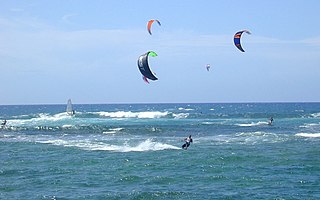
A power kite or traction kite is a large kite designed to provide significant pull to the user.
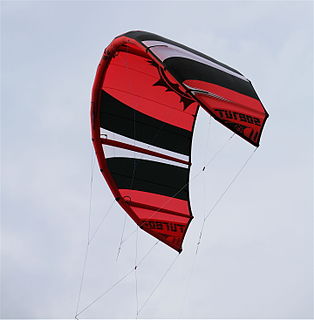
A leading edge inflatable kite (LEI) is a single skin kite with inflatable bladders providing structure. It is useful as a power or traction kite. These kites are flown using 2, 4 or 5 control lines and a bar. A LEI is a great kite for water use because the inflated bladders cause it to float on the water surface. A LEI can sit on the water for an indefinite time and still be relaunched because, unlike a foil kite, there are no chambers that can fill with water. Generally used for kitesurfing and kiteboarding, leading edge inflatable kites come in many different sizes, most commonly from 5 to 18 square metres.
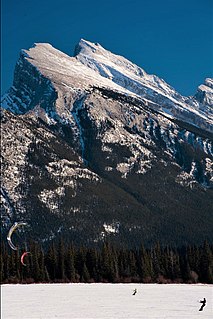
Snowkiting or kite skiing is an outdoor winter sport where people use kite power to glide on snow or ice. The skier uses a kite to give them power over large jumps. The sport is similar to water-based kiteboarding, but with the footwear used in snowboarding or skiing. The principles of using the kite are the same, but in different terrain. In the early days of snowkiting, foil kites were the most common type; nowadays many kiteboarders use inflatable kites. However, since 2013, newly developed racing foil kites seem to dominate speed races and expedition races, like Red Bull Ragnarok and the Vake mini-expedition race. Snowkiting differs from other alpine sports in that it is possible for the snowkiter to travel uphill and downhill with any wind direction. Like kiteboarding, snowkiting can be very hazardous and should be learned and practiced with care. Snowkiting is becoming increasingly popular in places often associated with skiing and snowboarding, such as Russia, Canada, Iceland, France, Switzerland, Austria, Norway, Sweden, Finland and the Northern and Central United States. The sport is becoming more diverse as adventurers use kites to travel great distances and sports enthusiasts push the boundaries of freestyle, big air, speed and back country exploration.
The term "air sports" covers a range of aerial activities, including air racing, aerobatics, aeromodelling, hang gliding, human powered aircraft, parachuting, paragliding and skydiving.

Kite landboarding, also known as land kiteboarding or flyboarding, is based on the sport of kitesurfing, where a rider on a surf-style board is pulled over water by a kite. Kite landboarding involves the use of a mountain board or landboard, which is essentially an oversized skateboard with large pneumatic wheels and foot-straps. Kite landboarding is a growing sport, and there are several competitions. Kite landboarding is attracting growing publicity although it is not yet as popular or as well known as kitesurfing.

Peter Lynn is a New Zealand kitemaker, engineer and inventor. He is notable for his construction of the world's largest kites, giant inflatable (sparless) display kites, the popularisation of kite buggying and contributions to the development of power kiting and kitesurfing. He spends much of the year travelling worldwide and displaying his kites at International Kite Festivals.
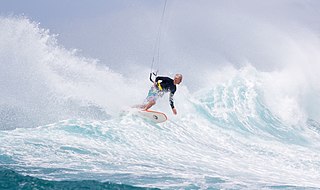
Pete Cabrinha is an American big-wave surfer, windsurfer, kitesurfer and artist. He is the founder and brand manager of Cabrinha Kites.

The arckite or twinskin kite is a type of traction kite designed and patented by Peter Lynn. It is a very stable, safe and secure type of powerkite. It can be used for all kinds of kite powered sports, for example: kiteboarding, landboarding, kite buggying or snowkiting. The shape of the kite is similar to a C shaped leading edge inflatable kite, however the construction is similar to a foil kite. These kites also fall into a category of foils called "closed-cell inflatables", meaning that the ram-air inlets on the leading edge of the kite are normally closed by flaps that act as one-way valves to maintain internal air pressure. It is this feature that makes the kite useful for kitesurfing since, unlike standard open-cell foils, if the kite crashes on the water, it will stay inflated and float long enough for the rider to recover and re-launch.

The International Kiteboarding Association (IKA), is the only kiteboarding class inside the International Sailing Federation (ISAF). The IKA class rules fall in the category of a development class.

Bruno Sroka is a French male kitesurfer and adventurer. He is 3 times winner of the World Cup as well as 3 times European Champion in course racing. Bruno Sroka is the first and only man that crossed the Cape Horn Cape Horn by kitesurf and the first one that realized the unique Way of Peace project in the Gulf of Aqaba.
Katja Roose is a Dutch female professional kite surfer.
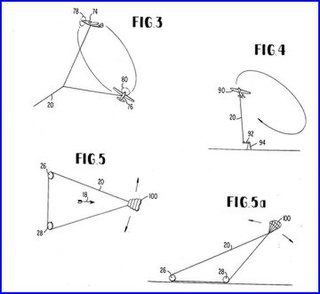
Crosswind kite power is power derived from a class of airborne wind-energy conversion systems or crosswind kite power systems (CWKPS) characterized by a kite system that has energy-harvesting parts that fly transverse to the direction of the ambient wind, i.e., to crosswind mode; sometimes the entire wing set and tether set is flown in crosswind mode. These systems at many scales from toy to power-grid-feeding sizes may be used as high-altitude wind power (HAWP) devices or low-altitude wind power (LAWP) devices without having to use towers. Flexible wings or rigid wings may be used in the kite system. A tethered wing, flying in crosswind at many times wind speed, harvests wind power from an area that is many times exceeding the wing's own area. Crosswind kite power systems have some advantages over conventional wind turbines: access to more powerful and stable wind resource, high capacity factor, capability for deployment on and offshore at comparable costs, and no need for a tower. Additionally, the wings of the CWKPS may vary in aerodynamic efficiency; the movement of crosswinding tethered wings is sometimes compared with the outer parts of conventional wind turbine blades. However, a conventional traverse-to-wind rotating blade set carried aloft in a kite-power system has the blade set cutting to crosswind and is a form of crosswind kite power. Miles L. Loyd furthered studies on crosswind kite power systems in his work "Crosswind Kite Power" in 1980. Some believe that crosswind kite power was introduced by P. Payne and C. McCutchen in their patent No. 3,987,987, filed in 1975, however, crosswind kite power was used far before such patent, e.g., in target kites for war-target practice where the crosswinding power permitted high speeds to give practice to gunners.
Ruben Lenten is a Dutch professional kite surfer who has won the Red Bull King of the Air in 2005.
Bruna Kajiya is a Brazilian professional kiteboarder. She is a six-time Vice World Champion and a three-time World Champion Freestyle in the World Kiteboarding League (WKL). In 2018, the WKL was replaced by the Global Kitesports Association (GKA) which became the official Kite Surfing World Title organization. In 2019, Bruna was the GKA Vice World Freestyle Champion, giving her her sixth Vice World Championship Title. In 2016, Bruna was the first woman to land a "Backside 315", a trick that combines a 540 degree rotation and double handle-pass.

Wing foiling or wing surfing is a wind propelled water sport that developed from kitesurfing, windsurfing and surfing. The sailor, standing on a board, holds directly onto a wing. It generates both upward force and sideways propulsion and thus moves the board across the water. The recent development of foilboards, which plane very early on a hydrofoil fin and thereby lift off the water producing low friction, represent the ideal complimentary hydrodynamic platform for wings. This young sport is poised to become wildly popular.
Formula Kite is the kitesurfing class chosen by World Sailing for 2024 Summer Olympics. The class features a foil kite and a board with a hydrofoil. The equipment is not one-design, but instead competitors use production equipment. The International Kiteboarding Association (IKA) manages the class. The class is for men and women.











